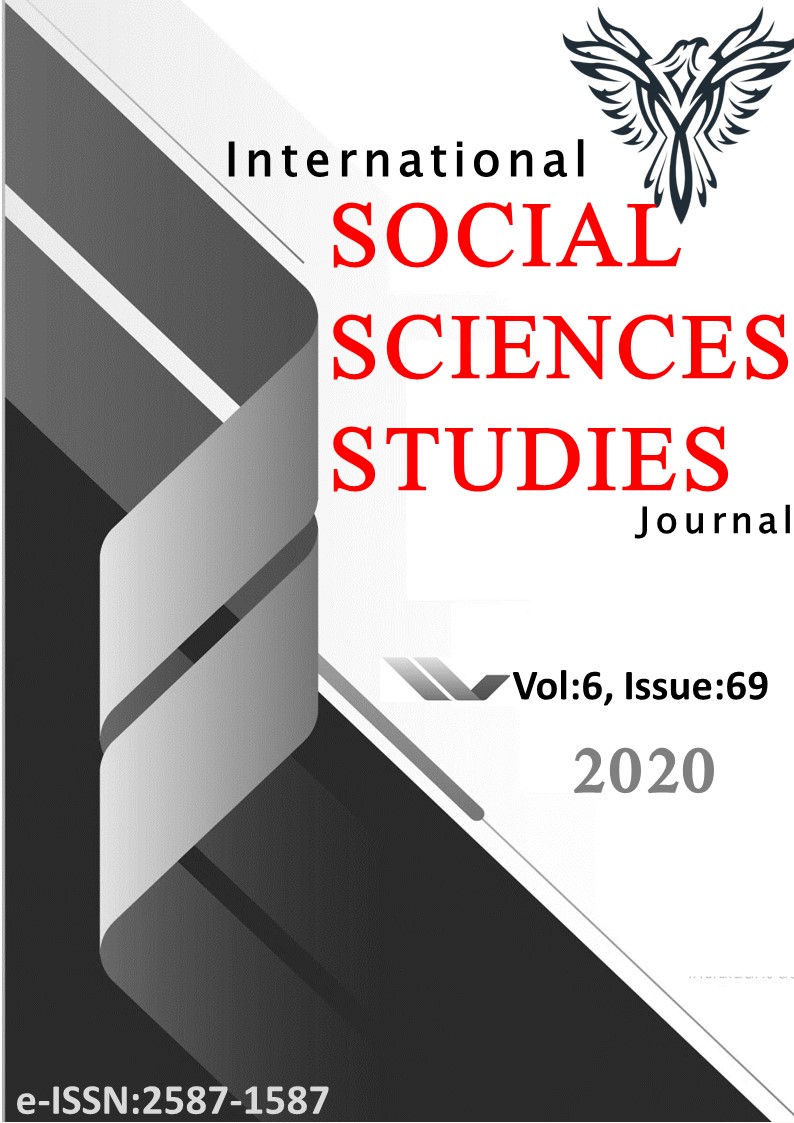İKONOGRAFİK VE İKONOLOJİK SANAT ELEŞTİRİSİ YÖNTEMİNE GÖRE MARC CHAGALL’IN “BEYAZ ÇARMIHA GERİLİŞ” ADLI ESERİNİN ANALİZİ
Author :
Abstract
Marc Chagall hem yaşadığı dönem itibariyle meydana gelen toplumsal olayları hem de kendi kişisel deneyimlerini ve kimliğini kimi zaman figüratif kimi zaman figüratif olmayan sanatsal yaklaşımıyla bütünleştiren, tuvallerinde kullandığı renkler, figürler ve sembollerle çok güçlü anlatım olanakları elde eden en önemli ressamlardan bir tanesidir. “Beyaz Çarmıha Geriliş” İsa’nın çarmıha gerilişinin, II. Dünya Savaşı zamanında Nazi Almanyası’nda Yahudiler’e yönelik olarak gerçekleştirilen Holokost’un ve sanatçının kendi bireysel deneyimlerinin eşsiz bir biçimde aynı manzara içinde sunulduğu çok katmanlı bir eser niteliğindedir. Bu çalışmada Erwin Panofsky’nin “İkonografik ve İkonolojik Sanat Eleştirisi” yöntemi göz önüne alınarak 20. yüzyılın en etkili ressamlarından Marc Chagall’ın “Beyaz Çarmıha Geriliş” adlı eseri analiz edilmiştir. Eser analiz edilirken ön ikonografik betimleme, ikonografik çözümleme ve ikonolojik yorum alt başlıkları kullanılmıştır. Araştırmada Panofsky’nin ikonografik ve ikonolojik sanat eleştirisi yönteminin önemi ve resim okumasındaki işlevselliği üzerinde durulmuştur.
Keywords
Abstract
Marc Chagall is one of the most important painters who integrates both the social events occurring as of his time and his personal experiences and identity with his artistic approach which is sometimes figurative and sometimes non-figurative and he creates very powerful expression opportunities with the colours, figures and symbols he uses in his canvases. “White Crucifixion” is a multi-layered work in which the crucifixion of Jesus, the Holocaust held in Nazi Germany for Jews in the time of World War II and the artist’s individual experiences were uniquely presented in the same landscape. In this study, based on Erwin Panofsky's “Iconographic and Iconological Art Criticism” method, the work of “White Crucifixion” by Marc Chagall, one of the most influential painters of the 20th centuries, was analyzed. While analyzing the work, pre-iconographic description, iconographical analysis and iconological interpretation were used. In the study, the importance of Panofsky's iconographic and iconological art criticism method and its functionality in reading paintings were emphasized.





